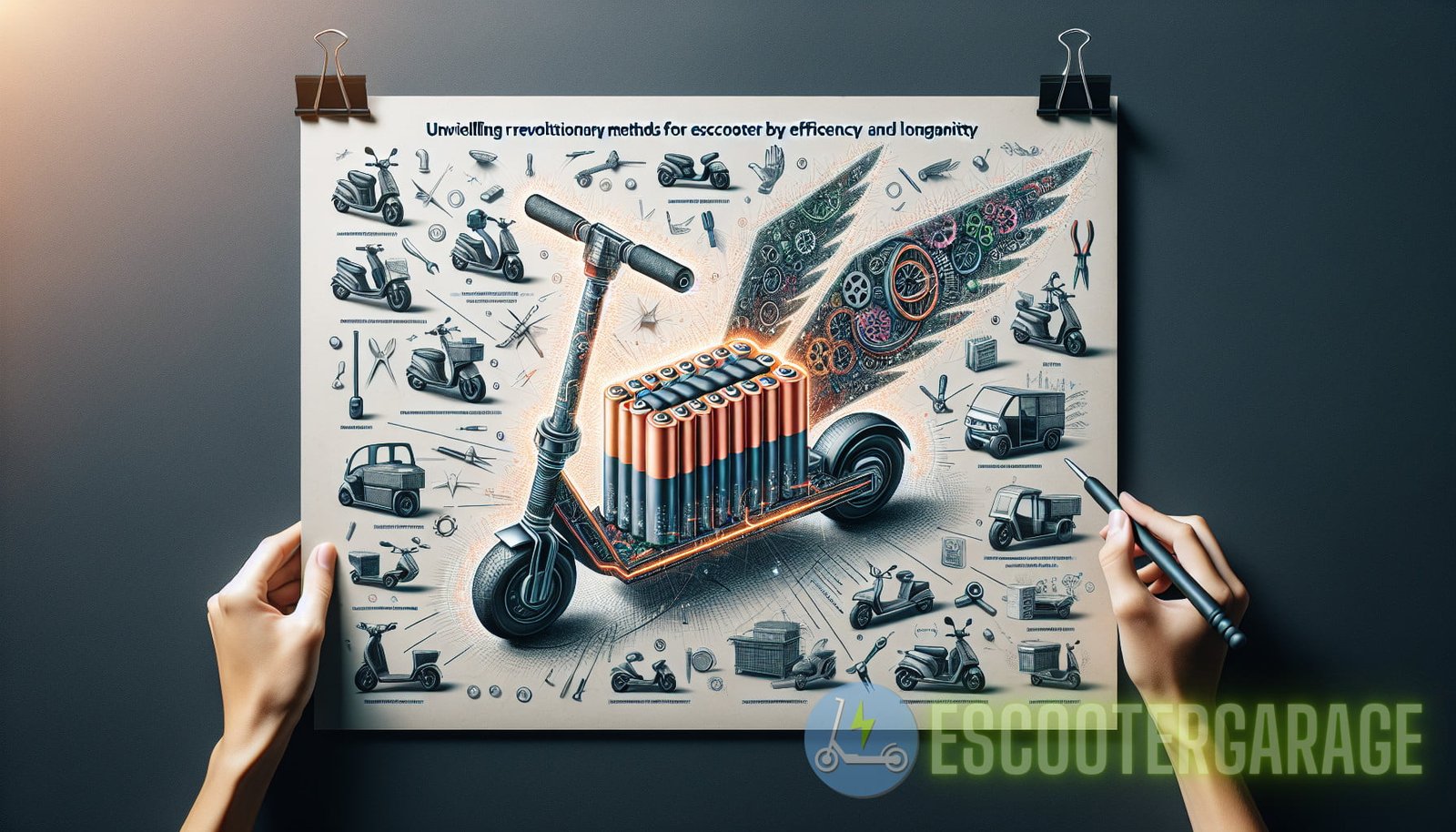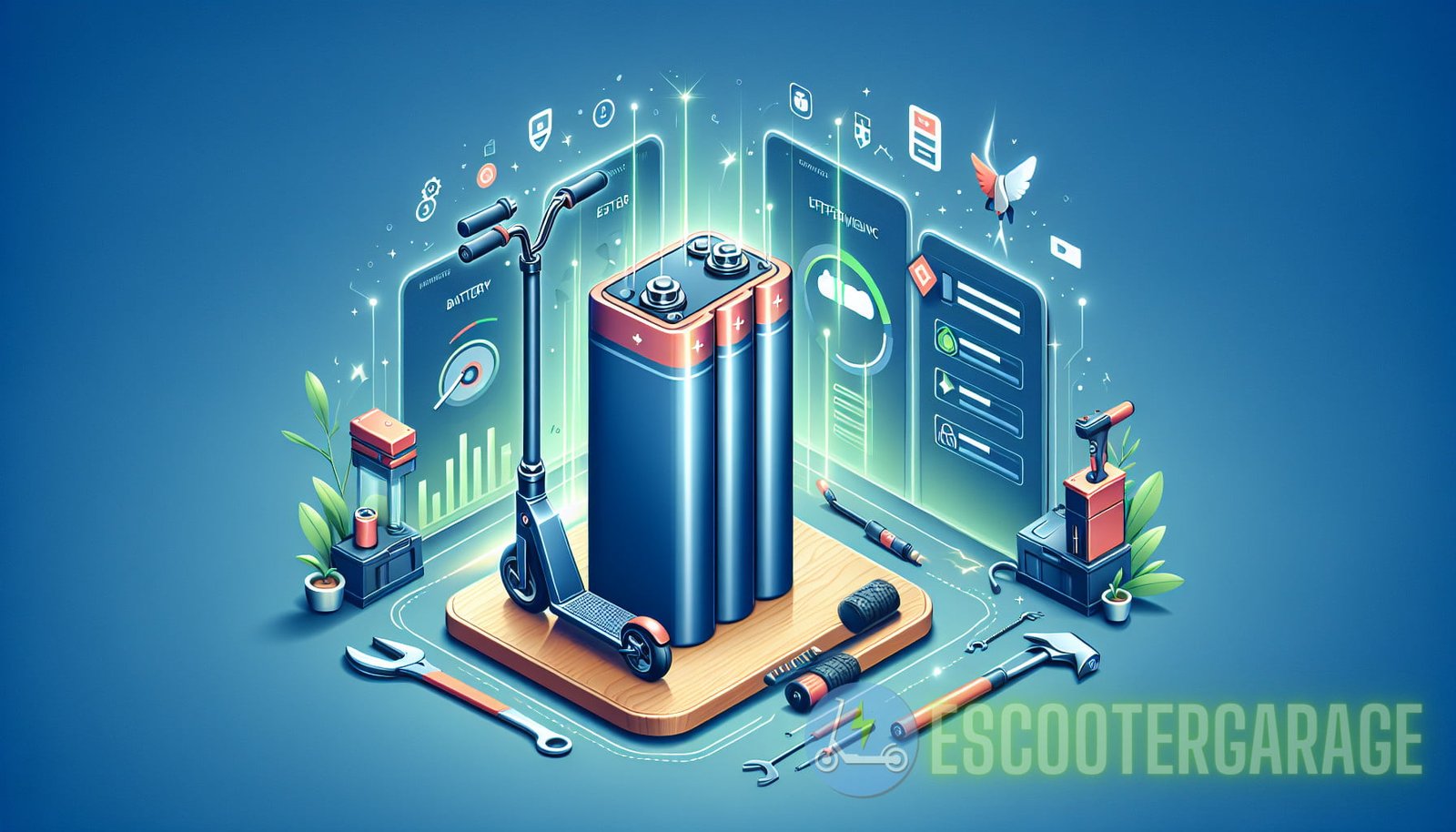Introduction
With the increasing popularity of electric scooters (eScooters) as a convenient and eco-friendly mode of transportation, the demand for efficient and long-lasting eScooter batteries has also risen. In response to this demand, revolutionary methods have been unveiled to unleash unprecedented eScooter battery efficiency, providing enhanced longevity and improved performance. This article explores these methods in detail, offering maintenance tips and expert advice for optimal battery optimization.
Understanding eScooter Batteries
Before we delve into the revolutionary methods for improving eScooter battery efficiency, it is important to understand the different types of batteries commonly used in eScooters. The two primary types are:
- Lithium-ion (Li-ion) batteries: These are the most popular and widely used batteries in eScooters due to their high energy density, lightweight design, and long cycle life.
- Sealed Lead Acid (SLA) batteries: These are an older technology and are less commonly used nowadays due to their lower energy density, heavier weight, and shorter cycle life compared to Li-ion batteries.
In this article, we will mainly focus on the optimization of Li-ion batteries, as they are most commonly found in modern eScooters and offer superior performance.
The Importance of Battery Efficiency
Battery efficiency is a crucial factor in determining the overall performance and longevity of an eScooter. The efficiency of a battery refers to its ability to convert stored energy into usable power without significant losses. A higher battery efficiency translates to longer range, faster acceleration, and better overall performance of the eScooter.
Improving battery efficiency is not only beneficial for the user but also for the environment. By maximizing the energy output from each charge, eScooters can travel longer distances on a single charge, reducing the need for frequent recharging and ultimately reducing the carbon footprint associated with charging and discharging processes.
Revolutionary Methods for Unleashing eScooter Battery Efficiency
The following groundbreaking methods have been unveiled to unleash unprecedented eScooter battery efficiency, ensuring enhanced longevity and improved performance:
1. Advanced Battery Management System (BMS)
The Battery Management System (BMS) plays a critical role in optimizing the performance and longevity of Li-ion batteries. It monitors the battery’s voltage, current, temperature, and other parameters to ensure safe and efficient operation. An advanced BMS utilizes intelligent algorithms and sophisticated control mechanisms to balance the cells, prevent overcharging, and protect against overdischarging. It also incorporates features like regenerative braking and smart charging algorithms to further enhance battery efficiency.
By implementing an advanced BMS, eScooter manufacturers can unlock the full potential of Li-ion batteries, significantly improving overall battery efficiency and extending the battery’s lifespan.
2. High-Energy-Density Battery Cells
The energy density of a battery cell refers to the amount of energy it can store per unit of its weight or volume. With advancements in battery technology, high-energy-density battery cells have become commercially viable for eScooters. These cells offer a higher capacity, allowing eScooters to travel longer distances on a single charge.
By using high-energy-density battery cells, eScooters can achieve improved battery efficiency, as more energy can be stored and utilized without increasing the overall weight of the battery pack. This translates to increased range and better performance for eScooter riders.
3. Smart Charging Infrastructure
Another key factor in optimizing eScooter battery efficiency is the availability of a smart charging infrastructure. Smart charging systems provide intelligent charging algorithms and real-time monitoring capabilities, ensuring that the batteries are charged optimally with minimal energy loss.
Through the use of smart charging infrastructure, eScooter users can avoid overcharging or undercharging their batteries, which can negatively impact battery efficiency and lifespan. These systems also enable load balancing, allowing multiple eScooter batteries to be charged concurrently while minimizing the strain on the electric grid.

Maintenance Tips for eScooter Battery Optimization
While the revolutionary methods mentioned above greatly contribute to eScooter battery optimization, regular maintenance and care are also essential to maximize battery efficiency. Here are some expert maintenance tips:
1. Proper Storage
When not in use, it is important to store eScooters and their batteries in a cool and dry place. Extreme temperatures can adversely affect battery performance and lead to reduced efficiency. Ideally, the battery should be stored between 20°C and 25°C for optimal longevity and performance.
It is also recommended to store the battery at around 50% charge during long periods of inactivity. Overcharging or discharging a battery before storage can result in decreased battery efficiency and a shorter lifespan.
2. Regular Charging Habits
Establishing a regular charging routine can help maintain optimal battery efficiency. It is generally advised to charge the battery after each use, rather than waiting until it is completely discharged. Li-ion batteries do not have a memory effect, so partial charging does not impact their overall performance.
However, it is essential to avoid frequent shallow charging cycles, as this can lead to a reduction in battery capacity over time. If the eScooter is not in use for extended periods, it is recommended to perform a full charge cycle (from 0% to 100%) every few months to keep the battery cells balanced.
3. Avoid Extreme Temperatures
Extreme temperatures, both hot and cold, can significantly impact battery performance and efficiency. It is important to avoid exposing eScooter batteries to extreme heat or cold for prolonged periods. High temperatures can accelerate the aging process of the battery, while extremely low temperatures can cause temporary capacity loss.
In extreme weather conditions, it is advisable to shield the battery from direct sunlight and use insulated covers if necessary. Additionally, if the eScooter is stored in a cold environment, it is recommended to bring the battery indoors and allow it to warm up to room temperature before charging.
Conclusion
Unleashing unprecedented eScooter battery efficiency is a result of advancements in battery management systems, high-energy-density battery cells, and smart charging infrastructure. These revolutionary methods, combined with proper maintenance and care, can optimize battery efficiency, ensuring enhanced longevity and improved performance.
By following the expert maintenance tips provided in this article and implementing the revolutionary methods discussed, eScooter users can unleash the full potential of their batteries, enjoying longer rides, improved performance, and reduced environmental impact.
Remember, regular maintenance and proper care are key to maximizing eScooter battery efficiency and ensuring a smooth and enjoyable riding experience.
For more detailed information on eScooter battery optimization and essential eScooter care, check out the following articles:
With the revolution in eScooter battery efficiency, the future of electric transportation looks brighter than ever!
—
Note: The term “escooter battery efficiency” in this article refers to the efficient use of batteries in electric scooters to maximize performance and longevity.



